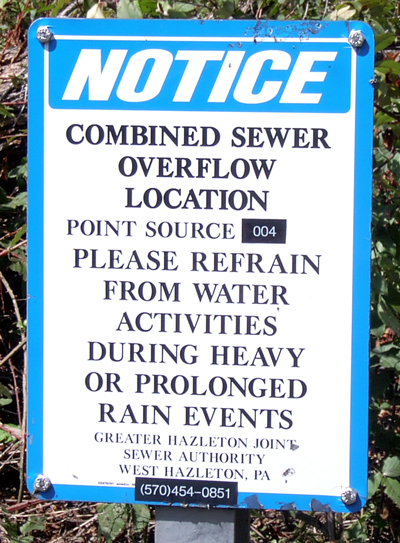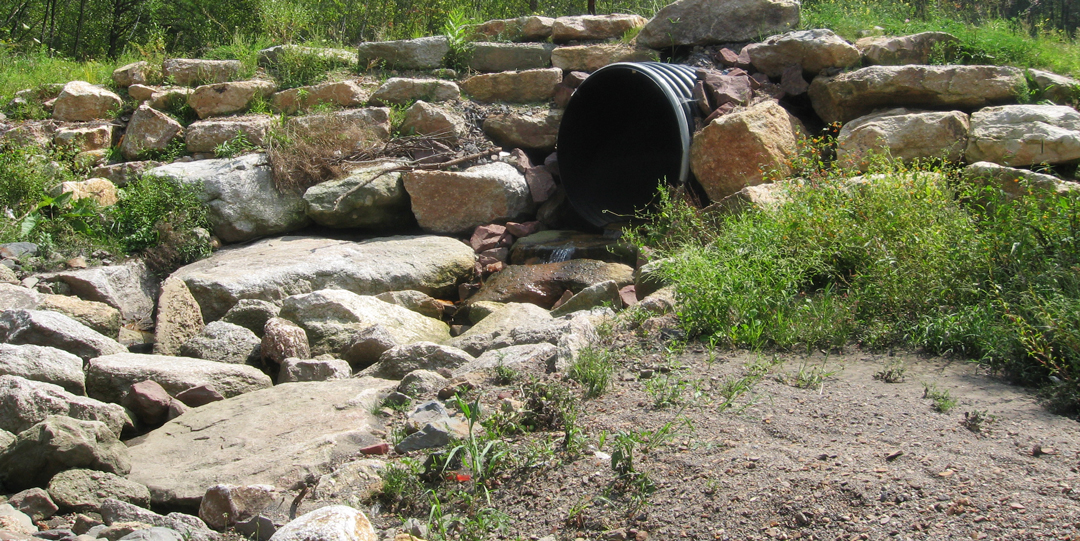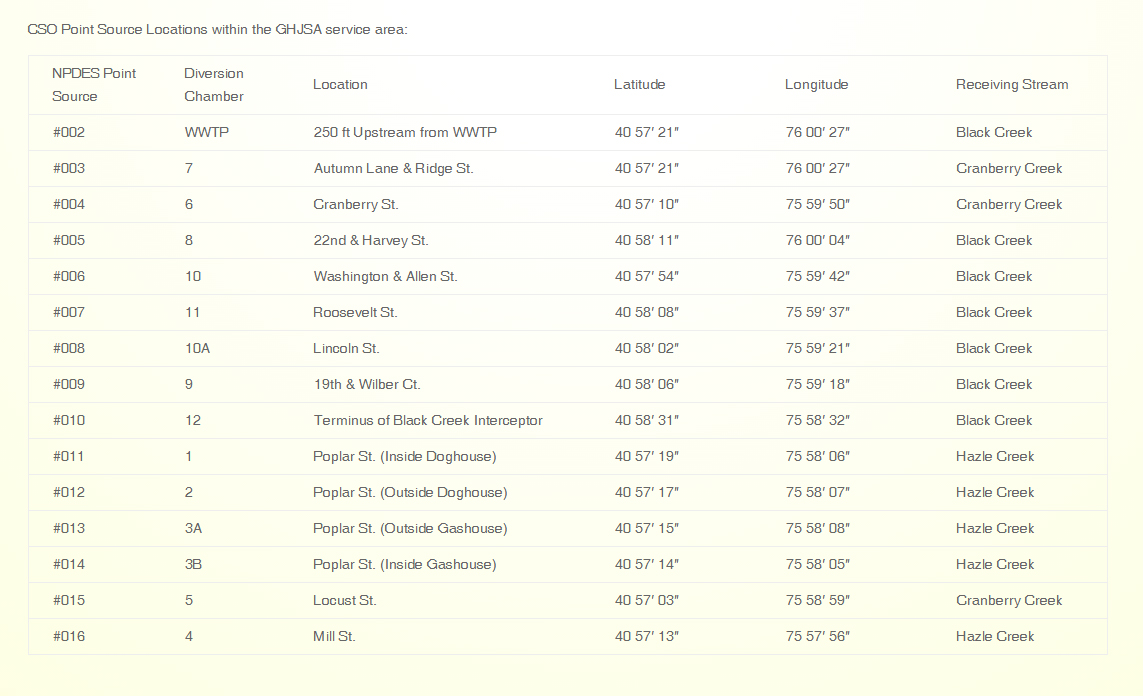Operations
Combined SewersCombined Sewer Overflows
Combined sewer systems are sewers that are designed to collect rainwater runoff, domestic sewage and industrial wastewater in the same pipe. Most of the time, combined sewer systems transport all of their wastewater to the sewage treatment plant, where it is treated and then discharged to the Black Creek. During periods of heavy rainfall or snowmelt; however, the wastewater volume in a combined sewer system can exceed the capacity of the sewage conveyance system or treatment plant. For this reason, combined sewer systems are designed to overflow occasionally and discharge excess wastewater directly to nearby streams. These overflows, called Combined Sewer Overflows (CSO’s), contain stormwater, debris and untreated sanitary sewage. Signs are posted at each CSO outfall location to deter the public from water activities at these locations.
Operation of the system is regulated by a National Pollutant Discharge Elimination System Permit (NPDES Permit No. PA0026921), which also identifies requirements for the Management and Control of CSO’s. The GHJSA combined sewer flows are regulated at fifteen (15) CSO locations that function as control points, allowing excess wastewater and stormwater to enter area streams during wet weather periods, thereby preventing downstream wastewater system flooding.



